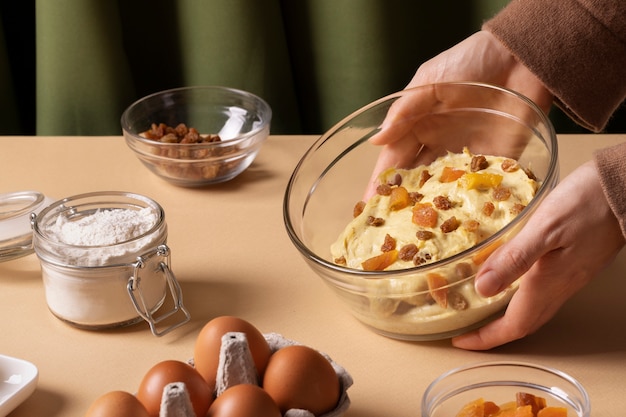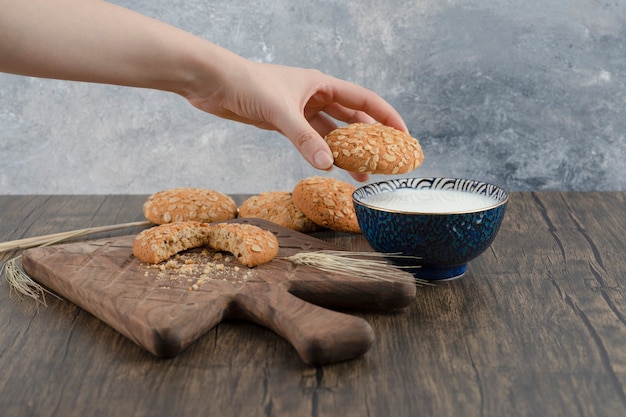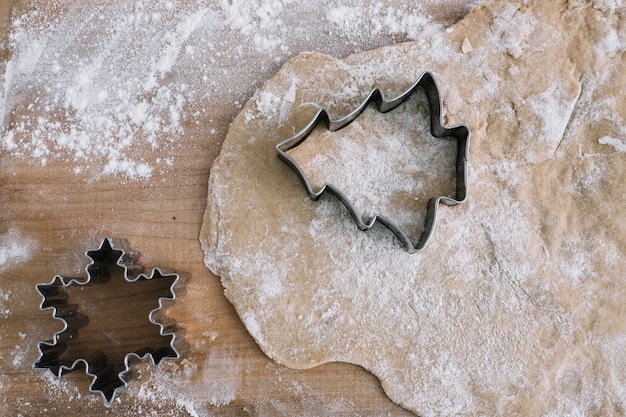Oh, the glorious crackle! Those little crunchy, salty, umami-packed bites of pure pig heaven. For years, I've been obsessed with perfecting the art of cracklin' making. It's not just a tasty snack; it's a symbol of a good Sunday roast, a testament to culinary dedication, and, frankly, a reminder that life is too short for soggy pork skin.
I've spent countless hours researching, experimenting, and devouring enough cracklins to fuel a small village. From the trials and tribulations of mastering the perfect crackling texture, to the joys of discovering new ways to season them, this journey has been filled with both crunchy triumphs and soggy defeats. But now, after years of dedicated research, I’m ready to share my secrets. Get ready to dive into the ultimate guide to making perfect pork cracklings.
Part 1: The Pork

choosing the right cut
The first step to cracklin' glory is choosing the right cut of pork. You want something with a good amount of skin, but not too much fat. I prefer a pork belly or shoulder for its marbling and generous skin coverage. These cuts give you the perfect balance of meat and fat, resulting in a flavorful crackling and tender pork.
Avoid cuts that are too lean, as the skin might be too thin to render properly. Imagine a thin, delicate piece of skin, trying to withstand the heat of the oven. It's not going to hold up, resulting in sad, soft cracklings!
The Importance of Skin Prep
The secret to perfectly crisp cracklings lies in the skin. You need to dry it out as much as possible. My method is simple but effective. I gently pat the skin dry with paper towels and then leave it uncovered in the fridge for at least 24 hours. This allows the skin to dry out and create a nice, firm texture.
Imagine the skin as a sponge. The longer you leave it exposed, the more moisture it loses, becoming a perfect canvas for the rendering process. This will ensure that the cracklings crisp up beautifully and don’t end up rubbery and disappointing.
Part 2: The Score

Why You Need to Score
Scoring the skin is crucial. It's a process that allows the fat to render more evenly and helps the skin to crisp up beautifully. Without scoring, the skin can end up tough and chewy. Think of it as giving the fat a head start.
Scoring Techniques
You can score the skin with a sharp knife, but I find that using a good quality meat cleaver gives me the best results. It allows for deeper and more precise scoring. I make shallow cuts across the skin, about 1/4 inch apart, going all the way through the fat layer, but not cutting into the meat. A little tip – be sure to hold the pork firmly, you don’t want any accidents!
Think of the scores as little escape hatches for the fat. The deeper the scores, the easier it is for the fat to melt and render, resulting in crispy, delicious cracklings.
Part 3: The Seasoning

Basic Seasoning
Simple is often best when it comes to seasoning cracklins. Salt and pepper are my go-to. I sprinkle generously over the skin, rubbing it in gently with my fingers. I like to use a coarse sea salt for a bit of extra crunch.
Experimenting with Flavours
Once you've mastered the basics, feel free to get creative. I've been known to add a pinch of smoked paprika for a smoky kick, or a touch of garlic powder for a subtle earthy flavour. If you're feeling adventurous, try adding a sprinkle of cayenne pepper for a bit of heat.
The possibilities are endless! You can even create flavour profiles for specific dishes. Imagine adding a pinch of rosemary and thyme to your cracklins to complement a roasted lamb dish. Or, consider a sprinkle of cumin and coriander for a Mexican-inspired dish. The possibilities are truly endless!
Part 4: The Rendering
Oven vs. Pan
There are two main methods for rendering pork cracklings: the oven and the pan. I prefer the oven method because it's a hands-off approach. It allows the fat to render slowly and evenly, resulting in crispier cracklings. The pan method can be a little more tricky, as you need to watch the pork closely to ensure it doesn't burn.
Oven Rendering
Preheat your oven to 400°F (200°C). Place the seasoned pork on a roasting rack set over a baking sheet to catch the drippings. Roast for about 2 hours, or until the skin is golden brown and crispy. You may need to adjust the roasting time depending on the thickness of the skin. The fat should have rendered down, leaving you with those coveted crispy cracklings.
The roasting rack is essential for allowing air to circulate around the pork, ensuring even cooking and crispiness. The baking sheet catches the rendered fat, which can be used in other dishes or saved for future cracklin' adventures!
Pan Rendering
If you're using the pan method, heat a large skillet over medium heat. Place the seasoned pork skin-side down in the pan and cook for about 20 minutes, or until the skin is golden brown. Flip the pork and continue cooking for another 10-15 minutes, or until the fat is rendered and the skin is crispy.
The pan method requires more attention. You need to watch the pork carefully, adjusting the heat as needed to prevent burning. A good-quality skillet is crucial, as you want a pan that can withstand high heat and distribute it evenly.
Part 5: The Crunch Test
The moment of truth! Take a small piece of the cracklin' and give it a good bite. It should snap crisply in your mouth, and the skin should be perfectly dry and free of any residual fat. If the cracklin' is still soft or chewy, pop it back in the oven or pan for a few more minutes.
This is the ultimate test of your cracklin' prowess. If the cracklin' doesn't snap with a satisfying crunch, it's back to the oven for a little extra love. You want that perfect balance of crispiness and a slight give when you bite into it.
Part 6: Breaking Down Your Cracklins
Now that you have your perfect cracklins, it's time to break them down into bite-sized pieces. You can do this with your hands, but I find a good pair of kitchen shears works best. Just be careful not to lose any of those precious bits!
This step is essential for portioning and enjoying those cracklins. You want to ensure that they are easily manageable and don't end up as huge, unwieldy chunks. A good pair of kitchen shears is perfect for this task. Just be careful to avoid any accidental finger chomps!
Part 7: Storage and Serving
Store your cracklins in an airtight container at room temperature for up to a week. They’ll stay nice and crispy, but you'll likely be enjoying them long before then!
Serve your cracklins as a snack, a topping for salads and soups, or even add them to your favourite dips and spreads. They also make a great addition to a charcuterie board, adding a salty, crunchy element.
Part 8: Cracklin' Variations
Sweet and Savoury
We've established the classics, but now it's time to go rogue! A sprinkle of cinnamon sugar can add a sweet and savoury kick, while a dash of chilli powder and lime zest will give your cracklins a Mexican twist. You can even add herbs like rosemary or thyme during the rendering process, or coat them in a sweet and sticky glaze like honey mustard.
This is where your creativity can really shine! The possibilities are endless. Experiment with different spices, herbs, and glazes to create unique flavour combinations that complement your dishes.
Cracklin' Chips
For a more substantial snack, try making cracklin' chips. Simply crush the cooked cracklins into fine crumbs and mix them with a binding agent like egg white or melted butter. Spread the mixture on a baking sheet and bake until crisp. You can season these chips with just about anything – salt and pepper, garlic powder, paprika – the possibilities are endless!
These chips are the perfect way to take your cracklin' obsession to the next level. They are crunchy, flavorful, and surprisingly satisfying. They can be enjoyed as a snack on their own or as a topping for soups, salads, or dips.
Cracklin' Dust
If you're feeling particularly adventurous, try making cracklin' dust. Grind the cooked cracklins into a fine powder and use it as a seasoning for everything from popcorn to roasted vegetables. This adds a unique, savoury flavour and irresistible crunch.
Cracklin' dust is a game-changer! Imagine the possibilities! Sprinkle it on popcorn, roasted vegetables, or even use it as a finishing touch on your favourite dishes. The crunch and flavour are addictive!
Part 9: FAQs
What if my cracklings are still soft?
If your cracklins aren't crispy enough, don't despair! Just pop them back in the oven or pan for a few more minutes. You can also try broiling them on high for a few minutes to get them extra crispy. If they are still not crispy after a few attempts, you may want to experiment with a different method of rendering.
Can I freeze cracklings?
Yes, you can freeze cracklings. Just store them in an airtight container and they'll keep for up to 3 months. However, they may lose some of their crunch when thawed. If you're planning to freeze them, it's best to freeze them in a single layer on a baking sheet and then transfer to an airtight container once they are frozen solid.
What should I do with the rendered fat?
Don't throw away the rendered fat! It's a delicious and versatile ingredient that can be used for cooking, frying, and even making soap! Just strain the fat through a cheesecloth or fine-mesh sieve to remove any impurities. You can store it in the fridge for up to 2 weeks or freeze it for up to 3 months.
Rendered fat is a true culinary treasure! It imparts a rich, savory flavor to dishes. Use it for frying potatoes, making gravy, or even add it to your favorite soups and stews.
What are the best ways to enjoy cracklins?
Cracklins are a wonderfully versatile snack. Enjoy them on their own, sprinkle them over salads, add them to your favourite dips and spreads, or use them as a topping for soups and stews. They also make a great addition to charcuterie boards, adding a salty, crunchy element.
Why are my cracklings chewy?
Chewy cracklins are usually a sign that the skin wasn't dried out enough before rendering. Make sure to pat the skin dry with paper towels and let it sit in the fridge uncovered for at least 24 hours. You can also try scoring the skin a little deeper, which will allow more fat to render out and help the skin to crisp up.
Part 10: Conclusion
There you have it – the ultimate guide to making perfect pork cracklings. From choosing the right cut of pork to mastering the art of rendering, I've shared all my secrets. I hope this guide helps you create your own batches of crunchy, salty, and utterly irresistible cracklins. So, go forth and crackle!
Everyone is watching

Prime Rib Roast Cooking Time Chart: Per Pound Guide
Cooking TipsPrime rib roast. Just the name conjures images of lavish dinners, crackling fires, and hearty laughter. It’s ...

How Long to Bake Potatoes in the Oven (Perfect Every Time)
Cooking TipsBaked potatoes are a staple in my kitchen. They're incredibly versatile, delicious, and surprisingly easy to m...

Perfect Rice Every Time: The Ultimate Guide to Cooking Rice
Cooking TipsAs a self-proclaimed foodie, I've always been a bit obsessed with rice. It's the foundation of countless cuisi...

The Ultimate Guide to Cooking Asparagus: Tips, Techniques, and Recipes
Cooking TipsAsparagus. The mere mention of this spring delicacy conjures up images of vibrant green spears, crisp and burs...

Ultimate Guide to Cooking the Perfect Thanksgiving Turkey
Cooking TipsThanksgiving. Just the word conjures up images of overflowing tables laden with delicious food, the scent of r...
